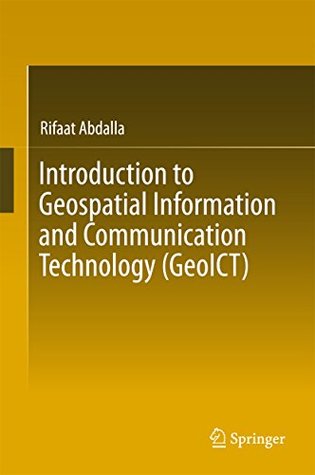Read online Introduction to Geospatial Information and Communication Technology (GeoICT) - Rifaat Abdalla file in ePub
Related searches:
Introduction to Geospatial Information and - Springer
Introduction to Geospatial Information and Communication Technology (GeoICT)
Introduction to Geospatial Information and - SpringerLink
Chapter 1 Introduction to GIS Intro to GIS and Spatial Analysis
Introduction to Geospatial Information and - ResearchGate
Introduction to Geospatial Information and - Amazon.com
Introduction to Geospatial Data Types, Tools and Programs
Geospatial Information and Geographic Information Systems
Geospatial Information and Geographic Information Systems (GIS
Introduction to Geospatial Resources and Formats
Geospatial Information Sciences - School of Economic, Political and
Introduction to GIS Programming and Fundamentals with Python
Introduction to Geospatial Semantics and Technology Workshop
Gg5066: introduction to gis tools, techniques, cartography in so doing it has revolutionised accessibility to geospatial data and information.
18 may 2011 information systems (gis): an overview for geospatial information is data referenced to a place—a set of geographic coordinates—which.
Request pdf introduction to geospatial information and communication technology (geoict) this book is designed to help students and researchers.
2 sep 2019 geographic locations and information about these locations shows us where social environmental and economic conditions occur, where.
Introduction to geospatial information and communication technology (geoict).
Our undergraduate and graduate degrees and certificate programs in geospatial information sciences prepare students to work in a fast-growing field that.
Remote sensing (rs ), introduce fundamental tools used for mapping natural resources.
1 esf 300 introduction to geospatial information technologies • different definitions of a gis have evolved in different areas and disciplines • all gis definitions recognize that spatial data are unique because they are linked to maps (space matters!).
1 what is a gis? a geographic information system is a multi-component environment used to create, manage, visualize and analyze data and its spatial.
Written for both majors and non-majors alike, introduction to geospatial technologies demonstrates the wide range of geographic technologies available to and used by geographers today.
Course objectives: understand the concept of gis and geoint explore geographic data and access information about geographic datasets and features create.
Introduction geospatial mapping is a form of spatial analysis technique. This technique uses sophisticated software that analyzes data about geographical or terrestrial databases through the use of geographic information systems (gis).
An important aspect of a gis is its ability to assemble the range of geospatial data into a layered set of maps which allow complex themes to be analyzed and then communicated to wider audiences. This ‘layering’ is enabled by the fact that all such data includes information on its precise location on the surface of the earth, hence the term.
Two additional developments are notable in the early days of gis: ian mcharg's publication design with nature and its map overlay method and the introduction.
Introduction to the use of geospatial information technology for drought risk management was held at phnom penh, cambodia on 14-17 november.
Geospatial information and geographic information systems (gis): an overview congressional research service 1 introduction the explosion of consumer demand for geospatial information and tools such as geographic information systems (gis) to manipulate and graphically display such information has brought.
This book is designed to help students and researchers understand the latest research and development trends in the domain of geospatial information and communication (geoict) technologies. Accordingly, it covers the fundamentals of geospatial information systems, spatial positioning technologies,.
Identify and prepare geospatial data and other content for visualization and analysis. Organize, create, and manage geospatial data stored in a geodatabase. Create and disseminate information products to support mission planning and intelligence operations.
Introduction accordingly, it covers the fundamentals of geospatial information systems, spatial positioning technologies, and networking and mobile communications, with a focus on ogc and ogc standards, internet gis, and location-based services.
All his achievements are based on his practical knowledge of gis and geospatial information systems.
A geographic information system is a multi-component environment used to create, manage, visualize and analyze data and its spatial counterpart.
Explore the tools, concepts, and terminology of spatial analysis and enroll for free.
Geospatial data, also known as geodata, has locational information connected to a dataset such as address, city or zip code. Geospatial data can also come from global positioning system (gps) data, geospatial satellite imagery, telematics devices, iot and geotagging.
Introduction to geospatial information and communication technology (geoict) [abdalla, rifaat] on amazon.
Course description: introduction to the fundamentals of geospatial technology, including geographic information systems (gis), global positioning systems (gps), cartography, remote sensing, and spatial analysis through a series of hands-on computer-based exercises.
Centre for geo-information how about your gis awareness� the use of: ▫ geographical data / geospatial data.
In the vector based model (figure 4), geospatial data is represented in the form of co-ordinates. In vector data, the basic units of spatial information are points, lines.
Overview geospatial data is created, shared, and stored in many different formats.
An introduction to geospatial concepts introduces libguide and provides link to other jhu data services libguides.
Geospatial resources are composed of data about geo-located features represented primarily by images (raster or vector) and tables or grids of observed or calculated attributes.
The workshop is an introductory tutorial on geospatial semantics introduces the semantic web and some general applications includes specific details of usgs data conversion, availability and access this workshop assumes little prior knowledge, only an ability to work with computers and web browsers.
While this gis textbook is principally an introduction to gis, most of the chapter's concepts are applicable to other geotechnologies including remote sensing,.
This article provides a very brief introduction to geographic information systems (gis) technology and the unique kinds of gis data files that enable such technology. Most data management professionals are more experienced with “classical” tabular data in cartesian (rows and columns) structures as found in most business, government and scientific databases.

Post Your Comments: